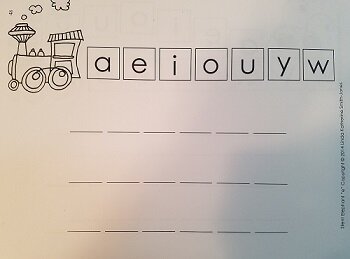How Do I KNOW if My Children have Phonemic Awareness?
I will never forget the shocked and amazed face of a 15-year-old I was tutoring who burst out, “Oh my gosh! Cat has 3 sounds in it!!”
She stopped stone still and stared at me trying to take in this new understanding she had realized for the first time. She hadn’t found the phonemic awareness games at all childish in their simplicity, she found them freeing. They changed her life. It’s a moment she will never forget. Neither will I.
In my previous posts about phonemic awareness, I shared the reason that phonemic awareness is THE critical first step for every learner.
I asked you to ask yourself this question:
“How much do I truly know about phonemic awareness?”
I shared my own journey from confusion to my giant A-HA as I figured out exactly WHAT is phonemic awareness and WHY it is THE first step a child MUST master in order to read, write and spell.
I also asked you to ask this question about your students no matter their age, whether you teach at home, tutor or have a classroom:
“Do my children have phonemic awareness?”
Now that you know WHY phonemic awareness is THE ALL IMPORTANT, CRITICAL first step for every learner and you’re asking yourself if they have phonemic awareness, I’m suspecting that your next question logically is:
“How do I know?”
This is where a good assessment comes in because we can’t just say, “I think so. I think my children have it. They’re 6 (7, or 8, or 9 or 23…) years old. I’m sure they do. Right?”
Careful assessment is vital. If you don’t know what they know, how do you know what to teach?
That was part of my journey, too!
After I truly felt that I understood what phonemic awareness was and why it was so important, I began to ask, “How do I know? How will I find out if each of my 27 students have phonemic awareness?”
As you know, my journey was to write Silent Elephant “e”, A Phonetic Reading Program for ALL Learners of Any Age Particularly Dyslexic or Struggling Readers.
I had to have an excellent phonemic awareness assessment for Silent Elephant “e”, so after much research, I developed one.
Part 1 of Silent Elephant “e” is Phonemic Awareness, and it includes a two-part assessment that is easy to individually administer and will leave no doubt in your mind whether each of your students have phonemic awareness or not, whatever their age.
With that question answered, the 44 lessons in Part 1 guide you to teach the games that develop phonemic awareness in every student.
These games have 4 levels of complexity and the instructions in Part 1 guide you to meet the individual needs of each of your students within a classroom, in individual tutoring or in homeschooling.
· Level 1 has words with short “a” and short “o”. It also has the consonant sounds that you can hold, stretch out or sing for a long time: /f/, /m/, /n/ and /s/. These consonants are called continuants.
· Level 2 builds on Level 1 sounds and adds the vowel sound of short “u” and the continuant consonant sounds of /l/, /r/, v/ and /z/.
· Level 3 builds on Levels 1 and 2 and adds the vowel sound of short “e” and the continuant consonant sounds of /k/, /h/, /j/, /p/ and /t/.
· Level 4 builds on Levels 1, 2 and 3 and adds the vowel sound of short “i” and the continuant sounds of /b/, /d/, /g/ and /w/.
When children (or teenagers or adults) have completed Part 1, they HAVE phonemic awareness. There will be no doubt about it! They will be ready to successfully jump into reading words in print.
I have to say, I feel very good about these last four posts.
I feel that you now have a better understanding of how to meet your children’s needs because you know:
· WHAT phonemic awareness is
· WHY it is important
· WHERE to go for assessments that answer your “How do I know?” question
· WHERE to go for THE program that teaches phonemic awareness as no other
I love helping you be the successful educator you want to be. Together we will strengthen your way along that path. Together we will make sure every child is a successful reader.
If you have further questions about phonemic awareness, feel free to contact us.











